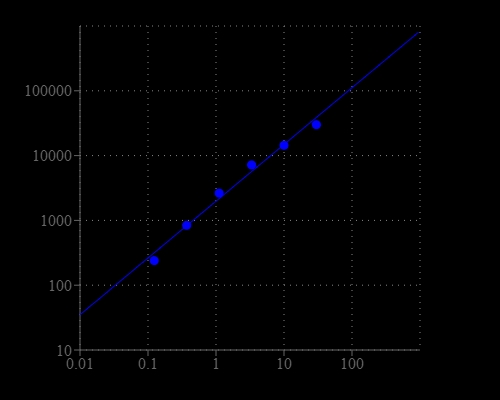Amplite® Choline Quantitation Kit
Choline and its metabolites play an important role in the structural integrity and signaling of cell membranes and cholinergic neurotransmission (acetylcholine synthesis). It is a major source for methyl groups via its metabolite, trimethylglycine that participates in the S-adenosylmethionine synthesis pathways. Choline deficiency may cause liver disease, atherosclerosis and possibly neurological disorders. Despite its importance in the central nervous system as a precursor for acetylcholine and membrane phosphatidylcholine, the role of choline in mental illness has been little studied. This Amplite® Choline Quantitation Kit provides one of the most sensitive methods for quantifying choline. The kit uses Amplite® Red to quantify the concentration of choline, which is related to the production of hydrogen peroxide in the choline oxidase-mediated enzyme coupling reactions. The amount of choline is proportional to the concentration of hydrogen peroxide formed in the enzyme coupling reaction cycle. In the presence of peroxidase, the fluorescence intensity of Amplite® Red is proportional to the formation of hydrogen peroxide that is converted to the concentration of choline. The assay can be readily read with a fluorescence microplate reader. Alternatively the assay can also be read at ~570 nm with an absorption microplate reader.


| Catalog | Size | Price | Quantity |
|---|---|---|---|
| 40007 | 200 Tests | Price |
Spectral properties
| Excitation (nm) | 571 |
| Emission (nm) | 584 |
Storage, safety and handling
| H-phrase | H303, H313, H333 |
| Hazard symbol | XN |
| Intended use | Research Use Only (RUO) |
| R-phrase | R20, R21, R22 |
| UNSPSC | 12352200 |
Instrument settings
| Fluorescence microplate reader | |
| Excitation | 540 nm |
| Emission | 590 nm |
| Cutoff | 570 nm |
| Recommended plate | Solid black |
Documents
Contact us
| Telephone | |
| Fax | |
| sales@aatbio.com | |
| International | See distributors |
| Bulk request | Inquire |
| Custom size | Inquire |
| Technical Support | Contact us |
| Request quotation | Request |
| Purchase order | Send to sales@aatbio.com |
| Shipping | Standard overnight for United States, inquire for international |
Page updated on December 20, 2025

